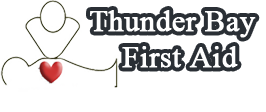Heart Disease on a Worldwide Scale
Heart disease is the number of one cause of mortality and morbidity in almost every country all over the world. Canada is no exception. Risk factors for heart disease are incredibly prevalent in Canadian society, particular for ages 12 and older and 19 and older. High body mass index (overweight and obesity) and sedentary lifestyles are very common in those populations, greatly predisposing them to developing heart disease – specifically Coronary Artery Disease.
How CAD can Cause A Heart Attack
The most dangerous part of the body to develop clots in is the brain and the heart. If the blood vessels in the brain get obstructed by plaque or blood clots, it can cause a cerebrovascular stroke. If this happens in the blood vessels that supply the heart with blood, it can cause a heart attack (medical term: myocardial infarction). Blood is incredibly important to the tissues; they are only able to function with a continuous supply of oxygen. If this supply is cut off (either gradually or suddenly), the tissue starts to die. Tissue death is an irreversible process – and tissue death in the heart is very dangerous and can lead to cardiac arrest.
What is Cardiac Arrest and CPR
Cardiac arrest is a condition where the heart isn’t beating adequately. The heart can either stop completely or beat slowly enough to not have a detectable pulse. Cardiac arrest is usually accompanied respiratory arrest or irregular breathing (manifesting as gasping). The immediate management of cardiac arrest is CPR, in or out of the hospital.
CPR stands for cardiopulmonary resuscitation. It is composed of a series of skills used to manage the cardiac and pulmonary systems of the body during arrest. The three main skills that are part of CPR are compressions, ventilations, and defibrillation. Since Basic Life Support focuses on out-of-hospital arrests, more focus is placed on the first two skills. The third skill, defibrillation, can only be performed if a defibrillator is available (usually when EMTs arrive, who will take over management).
C-A-B is the order by which CPR is performed – circulation, airway, and breathing. Chest compressions are performed first, followed by clearing and maintaining the airway, and giving adequate ventilations. In the hospital, this is followed by manual defibrillation (if needed), Advanced Cardiac Life Support (ACLS), and post-cardiac arrest care.
Training in Basic Life Support
The Basic Life Support program at Thunder Bay First Aid is a one-day training program, lasting 4.5 hours long. Certification in BLS is awarded to a student who finishes the program with complete attendance and passing grades on the written and practical certification tests. Credentials are valid for 36 months, after that they expire.
If you have previously taken Basic Life Support training and need to apply for a new credential, you don’t need to take the full program again. Refresher courses are offered for Basic Life Support; they run shorter, for only 4 hours or less.
Enrollment to our programs is as easy as filling up the online form below. You can also contact us via e-mail, telephone call or visit in person!
